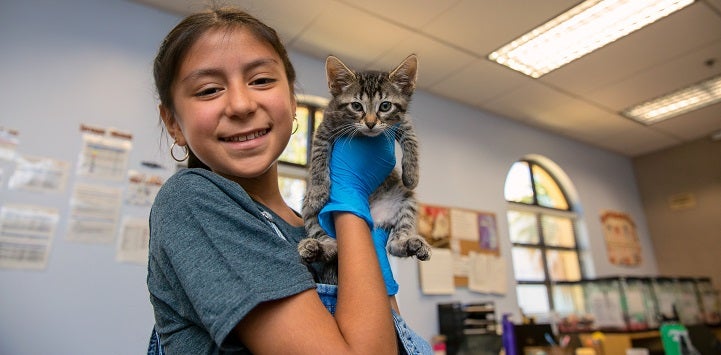
Pacific Region Grant Priorities
Competitive proposals must demonstrate, with comprehensive statistics, a direct impact on a reduction in the number of cats and dogs killed in shelters. Proposals without shelter data will not be considered. Priority consideration will be given to projects that will improve lifesaving within a shelter/community to achieve a 90% save rate (which is currently below 90%), focused on helping in those areas with the largest lifesaving gaps, and programs elevating Community-Supported Sheltering models. If you are supporting a local shelter in your proposal, application collaboration (including partnership letters of support) is strongly encouraged. Please refer to the pet lifesaving dashboard to see where the greatest lifesaving opportunities are in your area. Past successful proposals have an average $80-100 cost per animal impacted (oftentimes, as a partial grant for the work) and have been able to showcase clearly through data how the project will directly decrease the number of dogs or cats killed in the selected shelter(s).
The priorities for the Rachael Ray Save Them All grants are:
- Programs that show a measurable reduction in the number of cats and dogs killed in the region’s shelters. Examples of programs to launch or improve upon may include:
- Robust cat programming, which could include:
- Return-to-field (RTF)/shelter-neuter-return (SNR) cat programs: providing healthy impounded stray cats spay/neuter, vaccinations, ear tipping and returning to the outdoor location they were found)
- Trap-neuter-vaccinate-return (TNVR) in lieu of impounding healthy free-roaming cats into shelters.
- Lifesaving neonatal (under eight weeks) kitten programming, such as finder foster kits, “leave kittens where they are” programming, etc.
- Medical programs for at-risk shelter animals, such as ringworm, parvo/panleuk, or other conditions previously unable to be saved
- Robust return-to-home programs that reunite missing animals with their families. This could include creative solutions such as finder foster programs, creating technology solutions to improve the lost/found process to improve reunification, improve animal control processes to return animals in the field (in lieu of impounding at the shelter as the start of the pet’s reunification process), etc.
- Creative programming/incentives to increase adoption volume in the community to local residents.
- Programs targeted toward significantly increasing live outcomes for at-risk large dogs. This could include creative fostering programming, surrender prevention/return to home, behavior programming, or transfer/transport programs with organizations willing to increase their medical or behavior large dogs.
- Shelter intervention programs for animals that do not have a probable live outcome once entering the shelter. Examples may include solutions for behavior surrenders to keep animals in homes (with support), medical stipends or in-house medical intervention for medical cases with a home, etc.
- Increase lifesaving within the shelter by expanding capacity to support historically vulnerable populations and/or communities to ultimately achieve increased live outcomes. Programs could include targeted intake intervention programs (based on intake data), improved access to information and/or targeted services in non-English languages, improving RTO/adoptions in communities (based on outcomes data), etc.
- Collaborative project work between multiple organizations to strategically save more lives in a key shelter or community.
Examples of projects successfully funded in recent years include:
- A rescue group committed to transfer in at-risk medical case animals from a key shelter in their community. Grant funds were applied as a “starter fund” to cover core medical in the first 24 hours; the rescue then used each animal’s story to fundraise for each individual case to cost of care outside the first 24 hours.
- A humane society with municipal contracts used funds to increase the number of SNRs in their servicing community and expanded their cat ringworm and panleuk wards. In addition to improving the number of cats they could save, they also used funds to expand these services for cats from two other neighboring animal shelters.
- A humane society with municipal contracts started a “TNVR in lieu of intake” program, and grant funds covered the services so eligible cats and kittens did not have to be impound.
- A rescue group provided pre-built “kitten kits” to multiple area animal welfare agencies to use as neonatal kitten intake intervention tools, both in shelter and in the field.